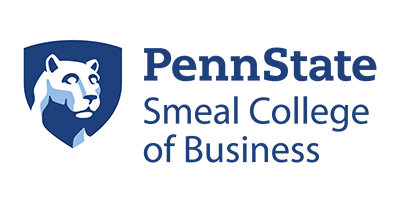According to the consultancy Armstrong & Associates, global third-party logistics revenues are on track to exceed $962 billion in 2020. Analysts add that the complexity of logistics management intensifies at the same pace as the double-digit growth of e-commerce. As a consequence, supply chain managers must continue to evaluate a growing list of integrated services, IT enhancements and value-added solutions concurrent with this trend.
 John Langley Jr., PhD., who serves as a director of development at the Center for Supply Chain Research at the Smeal College of Business at Pennsylvania State University says “Uberization” is going to change the game.
John Langley Jr., PhD., who serves as a director of development at the Center for Supply Chain Research at the Smeal College of Business at Pennsylvania State University says “Uberization” is going to change the game.
“It essentially accelerates the speed in which supply chains are recognizing the importance of being demand-driven,” he says. “Also, the ability to be demand-driven has been recognized over numerous years by Gartner in its continuing studies of what makes supply chains successful.”
Another “game changer,” says Langley is the “Amazon Effect.” He says this phenomenon is having a disruptive impact on the ways that business is conducted on a global basis.
“Assuming evidence of a meaningful strategic planning process, virtually all of our capable 3PLs and asset-based providers are developing a strategy for modifying and innovating their businesses to meet the changing B2C and B2B business and supply chain environments,” he adds. “On the customer side, and while many of our traditional industries are feeling significant pressure to re-think their business and supply chain strategies (e.g., retailing; distribution; manufacturing; commercial real estate; etc.), there likely will be impacts both directly and indirectly on all types of business.”
Here is the rest of the SCMR interview.
Supply Chain Management Review: For U.S. supply chain managers looking to figure out the global 3PL market: What is the state of the global 3PL market in terms of services? Is it really becoming commoditized?
John Langley: Overall, the market is strong. While we have seen somewhat of a slowdown in significant M&A activity, there are wide range of very capable and comprehensive providers of global 3PL services. While there be some similarity in the availability and quality services among competing 3PLs, the competitive environment is being driven significantly by the abilities of individual providers to develop and manage highly responsive customer relationships, innovate in ways that add value to their customers, and respond to more comprehensive value propositions.
SCMR: What are the biggest challenges facing global 3PL providers?
Langely: Key challenges include: Capacity, technology, adaptability and resilience.
- Providers and managers of supply chain services are continuously becoming better at managing their businesses, and this include capacity. Excess capacity results in lower yields, tight capacity results in higher yields.
- Technology is one of the key capabilities needed to manage capacity. Bearing some semblance to the concept of “Uberization,” ability to effectively manage analytics can facilitate accomplishment of overall business objectives.
- Adaptability and resilience go hand-in-hand, as successful providers will be sufficiently nimble to change or modify operations to meet the needs of the market, and to innovate and develop new and improved operating capabilities to meet sometimes quickly-occurring market changes.
SCMR: How do global shippers move forward in making the 3PL decision? What are some practical ways to vet global 3PL providers? Any steps/keys to making the choice?
Langley: The recommendation here is meaningful diligence in the selection process and decision. Needs to start wide with effective use of well-prepared RFI's (requests for information), and then focus on a smaller set of potential providers for more in-depth consideration. Utilization of the RFP (requests for proposals) should be limited to those providers who have made the short list, and selection process should proceed in a comprehensive manager. General advice include: do not skip or unnecessary shorten the time it takes to follow a diligent process; identify desired outcomes in advance, but be prepared to modify or adjust depending on what may be learned through the RFI and RFP processes; provide the candidate 3PLs with opportunities to become involved in useful 2-way dialogue to discuss the potential business opportunities. Last, for successful relationships that will have staying power, take the time to fully understand the attributes and capabilities that will enable prospective providers to meet your objectives, and also to understand why your business will lead to success for their business objectives.
SCMR: Once the choice is made, how do global shippers leverage new 3PL relationship? Once the choice is made, how should that relationship evolve? Are their steps/keys to making this happen?
Langley: Need to develop a strategic plan for managing the relationship. Ideally, crafting this plan should include meaningful participation by the 3PL as well as the customer. Plan should include steps for successful relationships between 3PLs and customers that rely significantly on collaboration, coordination, and sharing of values. Also, it is important to understand how elements of the relationship may vary depending on when they are needed. For example, there is a very significant difference between the types of technologies needed for long-term planning, operational planning, and real-time execution that involve 3PLs and customers. One of the soft spots here include real-time ability for these parties to communicate and coordinate details relating to individual shipments, etc. This has led to the development of real-time technologies that enable 3PLs and shippers to make needed decisions in very short periods of time … essentially managing operational details in a real-time environment.
SCMR: What are the benefits of a fully leveraged global 3PL relationship? Once this is flowing and the relationship is established, can you share an ideal situation on how it should work. What are the ultimate benefits?
Langley: A significant benefit here is the ability to effectively manage “workflows” that are at the 3PL-shipper interface. Examples here would include managing shipment visibility, coordinating transit and delivery details, and enabling efficient management of administrative activities. Ultimate goal here is to see that relationships between 3PLs and customers are as aligned and efficient as possible.
SC
MR


More 3PL
- Orchestration: The Future of Supply Chain
- February and year-to-date U.S. import volume is solid, reports S&P Global Market Intelligence
- 2024 retail sales forecast calls for growth, says National Retail Federation
- ISM reports another month of services sector growth in February
- February manufacturing output declines, notes ISM
- How to Create Real Retailer-Brand Loyalty
- More 3PL
Latest Podcast

 Explore
Explore
Business Management News
- How S&OP provides the answer to in-demand products
- AI, virtual reality is bringing experiential learning into the modern age
- Tips for CIOs to overcome technology talent acquisition troubles
- There is still work to do to achieve supply chain stability
- Blooming success: The vital role of S&OE in nurturing global supply chains
- Supply chain salaries, job satisfaction on the rise
- More Business Management
Latest Business Management Resources

Subscribe

Supply Chain Management Review delivers the best industry content.

Editors’ Picks





